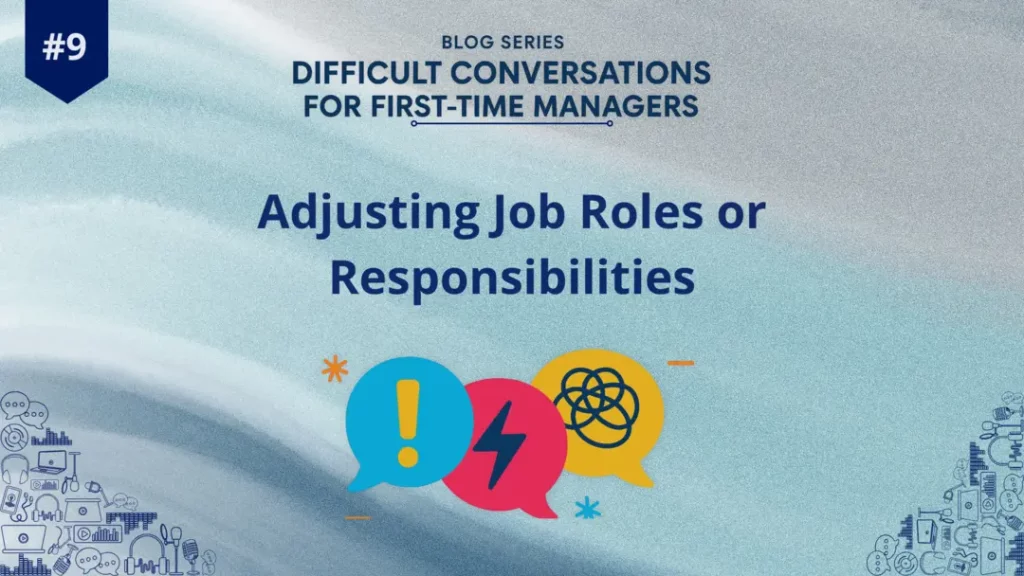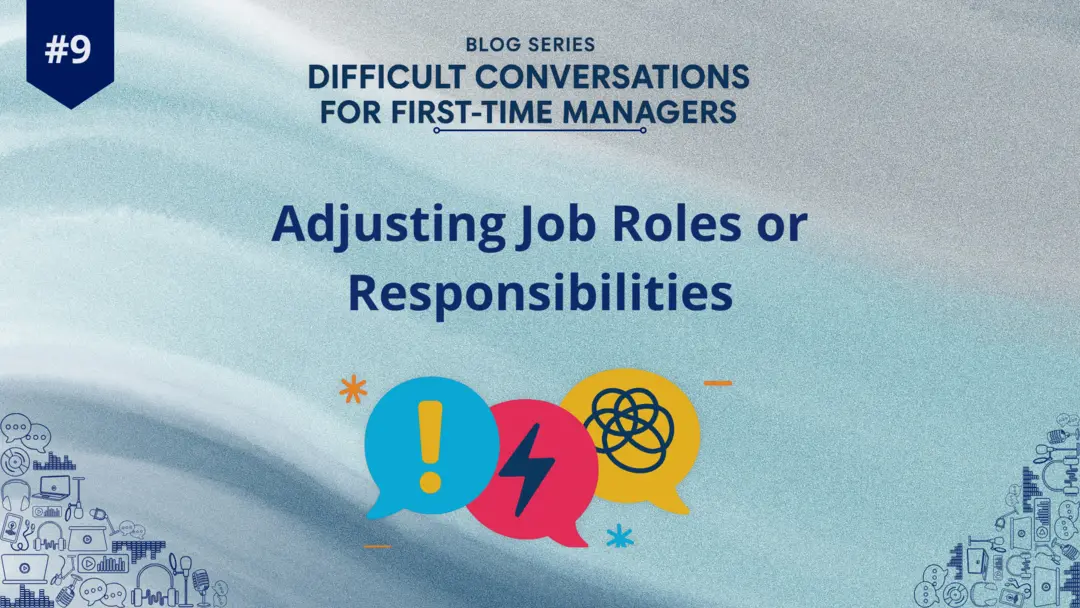“Why Should Anyone Be Led by You If You Can’t Handle Role Changes Gracefully?”


Ever felt like leadership would be easier… if only people didn’t get emotional?
That awkward pause when you tell someone their job responsibilities are changing. The confused look. The “But why me?” questions. The silence in the room after you explain that a role is being redefined. For many first-time managers, adjusting job roles or responsibilities isn’t just a business decision—it’s an emotionally charged conversation.
It’s the moment when your title of ‘Manager’ gets tested.
Can you communicate hard truths without breaking trust? Can you lead someone through uncertainty with empathy and clarity?
Let’s explore how to master this difficult conversation with thoughtfulness, especially in the context of Indian workplaces.
When “Just a Change in Scope” Feels Personal
In theory, adjusting someone’s role sounds like a normal part of business.
But in real life?
It can feel like a demotion, a betrayal, or even a punishment—especially in our Indian context where work is tightly linked to identity and pride.
Let me share a story.
Priya, a mid-level analyst in a Mumbai tech firm, was shocked when her manager told her that she would no longer be leading client meetings and would instead focus on backend strategy.
“This is not what I signed up for,” she said.
Her manager hadn’t intended it as a downgrade. He thought he was aligning her role with her strengths. But he failed to prepare her emotionally. He never discussed how the change might impact her career vision or how she perceived her own growth.
Sound familiar?
Leadership Isn’t Just Strategy—It’s Emotional Navigation
Harvard Business School professor Linda Hill once said,
And in India, where work culture often runs on relationships, loyalty, and social hierarchy, these conversations are never just transactional.
You’re not just changing tasks. You’re asking someone to let go of what they were known for, and step into something unfamiliar. Maybe even uncomfortable.
Here’s how you can do it better.
- Don’t Just Announce—Involve
Wrong way:
“Starting Monday, you’ll be taking over the reporting piece since Ramesh has moved to another team.”
Right way:
“Ramesh’s transition has opened up a gap in reporting. I wanted to discuss how we can realign responsibilities in a way that plays to your strengths. Let’s explore what you’d be most comfortable owning.”
Leadership Move: Bring the person into the change conversation early. When people feel consulted instead of informed, resistance goes down.
- Explain the ‘Why’ Before the ‘What’
Change is easier to accept when people see the logic behind it.
Let’s say you’re leading a small team in Bengaluru, and you need to redistribute tasks because your team has grown leaner post-budget cuts.
Instead of saying:
“Because of the budget changes, we have to adjust everyone’s responsibilities.”
Say this instead:
“Our team is leaner now, but we’re also focusing on deeper client value. I believe shifting some roles will help us deliver better results without overburdening anyone.”
Leadership Move: Connect the change to a meaningful outcome. People can tolerate a lot if they see the purpose.
- Acknowledge Loss, Then Offer Growth
In the Indian workplace, respect and status matter. Changing someone’s portfolio might feel like taking away their izzat. Acknowledge that.
For instance:
“I know letting go of client-facing work might feel disappointing, especially after the amazing relationships you’ve built. That’s not lost on me. At the same time, I see an opportunity here to deepen our strategic impact—and I think you’re exactly the right person for it.”
Leadership Move: Show empathy before you shift the focus to development. Validate their feelings before pushing them forward.
- Plan the Transition Together
Too often, managers hand over a list of “new responsibilities” like an office memo. Don’t do that.
Co-create a roadmap. Ask:
- What will you need to succeed in this new role?
- What support or training would make this smoother?
- What timeline feels realistic?
Leadership Move: Empower people to shape their own transition. It reduces anxiety and builds ownership.
- Follow Up—Not Just Once, But Often
The first conversation isn’t the end. It’s the beginning.
Have regular check-ins.
“How’s the shift feeling? Is anything unclear? What’s one thing we can improve in this transition?”
Make it safe for people to express doubt—even frustration—without fear of judgment.
Leadership Move: Be a guide through change, not just a messenger. Show you care about how they’re coping, not just what they’re doing.
Final Thoughts: Lead the Human, Not Just the Role
As a first-time manager, adjusting roles isn’t just an operational shift—it’s a test of your emotional intelligence.
When you handle these conversations well, you gain more than just better task alignment.
You gain trust, loyalty, and respect—the true currency of leadership.
So, the next time you need to change someone’s job scope, remember:
You’re not just managing a responsibility.
You’re managing a person—with hopes, fears, and ambitions.
This article is contributed by the GlobalGyan Editorial Team as part of our Leadership Essentials series.
In our series ‘Difficult Conversations for First Time Managers’ by Guan D’Penha, Senior Manager – Learning Solutions at GlobalGyan Leadership Academy, we will be sharing insights on the challenges faced by first-time managers.
Up next in our ‘Difficult Conversations for First-Time Managers’ series:
What happens when you say “no” — to a raise, to a promotion, to expectations?
Is it a leadership failure… or the very sign of true leadership?
In our next article, we explore how to deny a raise with honesty, empathy, and direction — without breaking trust.






Responses